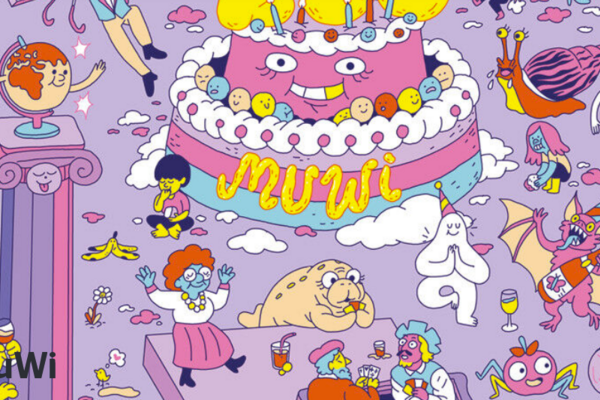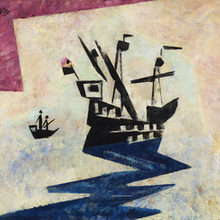200 years Museum Wiesbaden
The Museum Wiesbaden is celebrating its 200th birthday in 2025 with a large program of exhibitions and events.
Today, the two-part museum presents a varied program of permanent and special exhibitions on more than 7,000 square meters of space.
Highlights of the anniversary year include the double exhibition "Honey Yellow" about bees in art and nature and the inauguration of the new themed room "Change" in the permanent exhibition "Aesthetics of Nature".
Anniversary Saturdays in April
- Saturday, April 26: Let's celebrate x Techno Sinfonico x Schlachthof
4 to 5 pm
Acoustic house music by the wind players and drummers of the Hessisches Staatstheater
8 p.m. to 2 a.m. Party night with the Schlachthof
On this evening, the museum becomes a dance floor. Dress up as a "MuWi Star": whether as a work of art, an animal or an artist - there are no limits to your imagination
Change" theme room
To mark the anniversary, the permanent exhibition Aesthetics of Nature will be ceremoniously supplemented with a new themed room, Wandel. The approach of presenting nature from its sensual and aesthetic side in themed rooms is unique in the world. Using more than 6,000 animals, plants, minerals and fossils, the phenomena of color, form, movement, time and change are vividly conveyed.
The new themed room makes it clear that nature is in a constant state of change, be it the movement of continents, the diversity of minerals or the metamorphosis of butterflies. Climate change and its consequences are also brought to life. A special focus is placed on the co-founder of modern science, who was also an important artist: Maria Sibylla Merian (1647-1717). Her original animal specimens from her trip to South America are among the treasures in the museum's depots.
The bee - popular figure of the 21st century
The double exhibition "Honey Yellow" in the art department is dedicated to the more than 500-year history of the bee in art with top-class loans from European museums, including works from Lucas Cranach the Elder to Joseph Beuys and Rebecca Horn. It tells surprising stories, philosophical ideas and astonishing allegories about the insect.
The nature section sheds light on the cultural history and biology of the bee. The exhibition ranges from the oldest archaeological evidence and worldwide ethnological evidence to biological facts and questions of biodiversity.
Classical Modernism - Feininger, Münter, Modersohn
In spring, other special exhibitions in the art department will show Sven Drühl's artistic and theoretical examination of 19th century landscape painting, the century in which the museum was founded. Photographs by Dirk Reinartz provide a rare insight into the creation of Richard Serra's sculptures.
In the fall, the Department of Classical Modernism presents Feininger, Münter, Modersohn-Becker ... how art enters museum collections through civic engagement.
There will also be a special focus on Ilse Leda and Friedrich Vordemberge-Gildewart, especially as the museum will also be the venue for the highly endowed Vordemberge-Gildewart scholarship. Louise Nevelson - The Poetry of Searching presents the sensitive and material-rich art of this exceptional American artist in a solo exhibition with a special focus on Nevelson's little-known collages.
Three study exhibitions
The Natural History Collections are presenting three study exhibitions to accompany the annual Honey Yellow exhibition and the newly opened collection room.
From the largest and smallest representatives of the animal kingdom to a scientific examination of eggs as the origin of life and a reappraisal of the collection from Cameroon, the study exhibitions offer a wide range of topics to deepen your knowledge.

